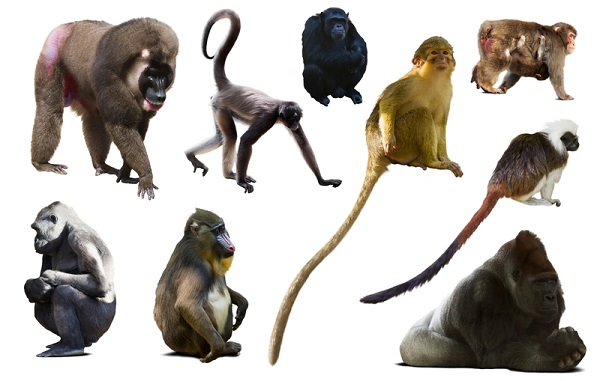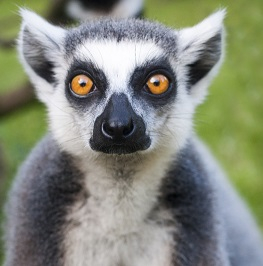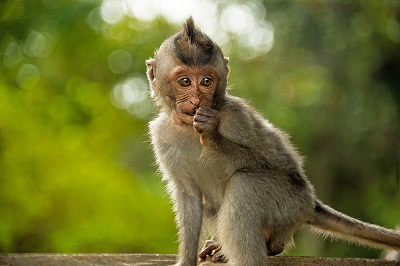

It cannot be disputed that the contemporary MAN, Homo sapiens sapiens, is a primate and a distant relative of monkeys and apes. However, very few individuals are aware of their connection. The name "primate" (meaning first or highest among all) was coined by Swedish botanist Carl von Linnaeus for the particular order Primates of the Animal Kingdom, Class Mammalia, which includes humans and nonhuman primates. Primates are multicellular organisms (metazoans), that have segmented spinal columns (vertebrates), an internal skeleton (chordata), and stable body temperatures. With 51 genera and 168 species, primates make up the seventh-largest order (counting both extant and extinct species). 50 species and 16 genera of these are found in the New World. This suborder of mammals is frequently regarded as the most significant.

Figure 1: Collection of different types of primates
Since most ape species are descended from tree-dwellers, they are all generally capable of climbing trees.
They are primarily sociable creatures. The majority of them spend their lives on trees.
They usually have a single child from a single pregnancy.
They have a rotating shoulder joint. They can effectively climb trees because of their robust collarbones and ball joints.
They have thumbs for gripping and, unlike humans, a huge toe that is independent of the other toes. A primate can grip objects effortlessly due to the movements of their hands, fingers, and thumbs.
Compared to other animals, they have bigger brains.
Claws have been changed into flat nails.
Every species of ape has a stereoscopic vision. A mammal can see far away because of its dual overlapping eyesight. In a monkey, visual processing takes place in around 50% of brain cells.
The two methods used by scientists to categorise species are traditional taxonomy and cladistics. Biologists and palaeontologists both heavily rely on cladistics, whereas paleoanthropologists are schooled in evolutionary theory. Combining both systems—specifically, the cladistic ordering of species based on common traits and the binomial nomenclature (genus and species) of traditional taxonomy—has clear benefits.

They were the first of the primate suborders to develop.
They are also referred to as "Prosimians" and "lower Primates."
Consists of a huge hairless nose tip that is wet.
They can be found in most tropical parts of Madagascar's islands.
There are five lemur families in this group.
Strepsirrhini (prosimians) |
Infraorder | Family |
|---|---|---|
| Lemuriformes(lemurs) | Lemuridae | |
| Lepilemuridae | ||
| Cheirogaleidae | ||
| Lorisiformes(lorises) | Indriidae | |
| Daubentoniidae |
Monkeys make up more than 90% of them, with apes and humans making up the remaining 10%.
The most successful primates on Earth.
|
Haplorrhini (Dry noses) |
Infraorder | Parvorder | Superfamily | Family |
|---|---|---|---|---|
|
Simiiformes |
Platyrrhini (New Worldmonkeys) |
|
Tarsiidae |
|
|
Callitrichidae |
||||
|
Cebidae |
||||
|
Catarrhini (Old World monkeys, apes and humans) |
Cercopithecoidea (Old World monkeys)
|
|
||
|
Hominoidea (apes andhumans) |
Hylobatidae |
|||
|
Hominidae |
They are exclusively herbivorous and arboreal.
A tail serves as a third hand for several members.
Wide septum separating a flat nose with horizontally protruding nostrils.
2132 or 2133 in the dental formula.
Exclusively found in the tropical woods of central and southern America, including southern Mexico

Their nostrils extend downward and have a thin, tiny septum between them.
They have sacculated stomachs, which aid in improved plant material digestion.
Located in Africa, the Middle East, and south and east Asia.
Consists of 7 species in the Cercopithecinae and Colobinae families.
Homo sapiens sapiens, the modern man, is unquestionably a primate and a distant cousin of monkeys and apes. Since most ape species are descended from tree-dwellers, they are all generally capable of climbing trees. They can effectively climb trees because of their robust collarbones and ball joints. They have thumbs for gripping and, unlike humans, a huge toe that is independent of the other toes. A primate can grip objects effortlessly due to the movements of their hands, fingers, and thumbs. Classification The two methods used by scientists to categorise species are traditional taxonomy and cladistics.
Q1.Why are primates studied in anthropology?
Ans. Biological anthropologists study monkeys to better comprehend the development of social behaviour and its advantages and disadvantages because most nonhuman primates, including humans, live in groups.
Q2.What is the name of the study of primates?
Ans. Primatology is the study of nonhuman primates, including their biology, evolution, and classification.
Q3.What exactly is a prehensile tail?
Ans. A prehensile tail is a well-adapted tail that can hold or grip items. This tail modification primarily aids arboreal species in grasping food from branches. Monkeys from the New World have prehensile tails.